Navneet Sahni tells of his surreal pilgrimage infused with rich tradition, sacred rivers and holy towns
An early June morning we set off from a hot and dusty Delhi for a drive through the Garhwal Himalayas to visit and pay obeisance at the Hemkund Sahib Gurudwara and the Badrinath shrine. Little did we know that it would be a journey of a lifetime with a million memories. What started off just as a visit, turned out to be a soul stirring insight into incredible historical stories. No wonder the North – central Himalayas comprising Garhwal / Kumaon mountains is aptly known as the Abode of the Gods. The first leg – Delhi to Rishikesh – was a complete disappointment as there were massive traffic congestions at Modinagar, near Meerut and later near Roorkee. The Haridwar / Rishikesh stretch was perhaps the worst leg of the journey as it was not only super-crowded but also dusty, hot and absolutely avoidable as one can go via the alternative route of Landsdown and Pauri. We decided then and there that the return journey would be using that route rather than the Rishikesh and Haridwar route. The Char Dham road project is underway and will eventually become a super highway but till that time one should avoid it like a plague. We decided to push on and not stay the night here.
The stretch of road alongside the Ganga from Rishikesh onwards is dotted with small beachside rafting camps. These camps look very inviting and interesting for the younger lot of tourists as it promises adventure, romantic campfires and sleeping under the canvas. Nonetheless we decided to press still onwards aiming to stay overnight at Rudraprayag.
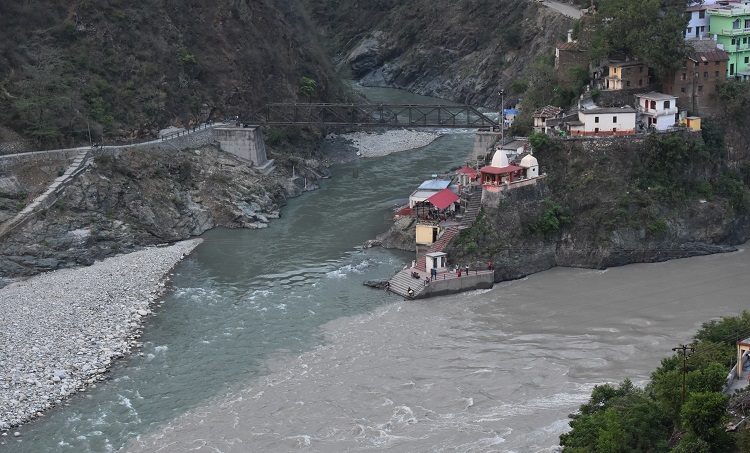
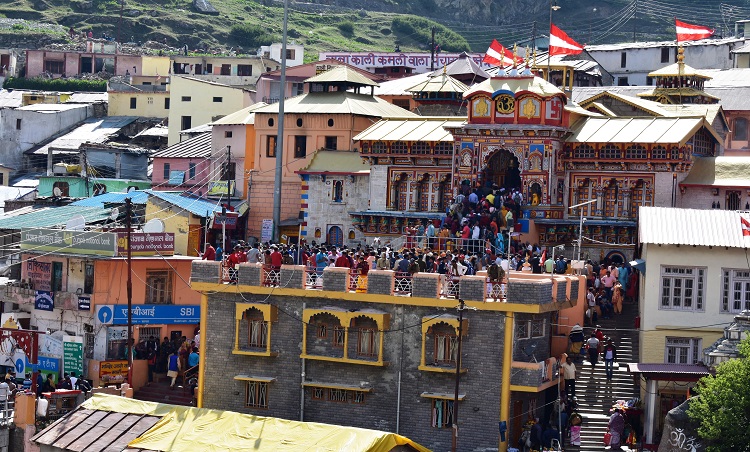
The word Prayag means – confluence of sacred rivers or Sangam. As the sacred rivers – Ganga, Jamuna and Saraswati flow down from this stretch of the Himalayas, there are six major such points. The first and – for some the most important Prayag – Devprayag is a major place for pilgrimage as the Raghunath ji temple (dedicated to Lord Vishnu) overlooks the confluence of two major rivers Alaknanda and Bhagirathi – eventually forming the sacred Ganga. The mythical Saraswati flows just under the temple and meets the two major rivers. This is one of the Panch Prayags of the Alaknanda and Devprayag is considered as a holy place itself where getting a dip is considered “purifying”.
The important historical and administrative town of Srinagar is the next landmark on the drive. This was the capital city of the Garhwali kings from the 15th. Century till the time the British ruled the Garhwal hills. Unfortunately in 1894 the old city was completely destroyed and what remains now is actually the newer part of the city. A little outside the town lies the famous Siddh Peeth Dhari Devi Temple which is built on a platform in the middle of the river Alaknanda. A manifestation of Goddess Kali, she is considered to be the guardian deity of Uttarakhand and is revered as the protector of the Char Dhams. To build a hydro-electric plant the deity had to be moved to another location for some time. There was a lot of opposition to the moving of the idol of Maa Dhari Devi which did happen eventually. The devotees of the goddess believed that the moving of the idol would somehow agitate Goddess Kali and it would not be good for the region. Unfortunately it all came true exactly on the next day of this incident a massive cloudburst and flash flood started in very high reaches near the Kedarnath Dham, which led to widespread damage washing away many people, houses, trees, and vehicles.
The next town / prayag – Rudraprayag is one of the Panch Prayags of Alaknanda river as it meets the fast flowing Mandakini. This town also is important as it is the gateway to two major Dhams (Badrinath and Kedarnath). An interesting fact is that Narad Muni worshipped Lord Shiva at the confluence point and thus became the God of Music (Rudra) from where the town got its name. Jim Corbett was the hunter of the most famous maneater Leopard – who some say took about 125 lives and till date there is a signboard where the animal was shot. Apparently, there is a mela (fair) held every year to commemorate it. The Shivanandi river lodge is a small place close to the river and an ideal place for a night halt.

Alaknanda is the dominant river in the Garhwal Himalayas descending from the foot of the Satopanth Lake at a height of 4,402 m (14,442.3 ft) near the Nanda Devi peak. It traverses a length of 229 km and engulfs 5 rivers enroute at the five prayags. It is only at Dev Prayag where it meets the Bhagirathi to form the main stream of the Ganges. Apart from the Char Dhams, the Panch Prayags too are considered very holy and one can see devotees taking a dip in the icy cold waters.
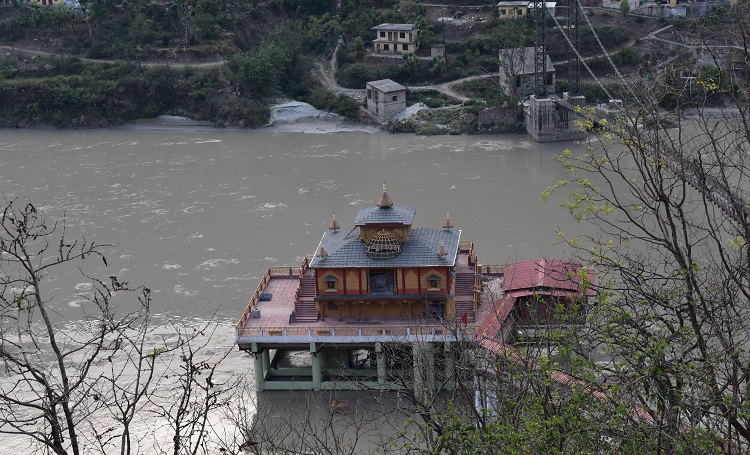
Next morning we walked down to the prayag and found that the icy cold water was muddy and heard that it had rained further up towards Kedarnath. The clear waters of Alaknanda and the muddy waters of the Mandakini made a clear divide at the point where they meet. After “purifying” ourselves we hearded for Joshimath. The important prayag of Karnprayag is next where the fast flowing Alaknanda meets Pinder (originating from the foot of the great Nanda Devi massif). The epic Mahabharata legend narrates that Karna did penance here and earned the protective gear of Kavacha (armour) and Kundala (ear rings) from his father, the Sun god, which gave him indestructible powers.
Climbing up from Karnprayag towards Joshimath, the scenery changes dramatically and with deep gorges and high mountains, one can see the snow-clad peaks all around. The road winds up becoming narrow and with huge amounts of traffic, traffic jams are pretty common. At Nandprayag (another of the Panch Prayag) the Alaknanda meets Nandakini (also originating from the foot of Nanda Devi massif and flows through the sanctuary beneath the mountain. A little further up when the climb became steep we encountered a massive traffic jam. The district authorities in all their infinite wisdom have allowed a refueling station at a narrow corner (with hardly any place for 2 vehicles to pass), which brought the traffic to a standstill. We encountered at least a 5 km jam and took 3 precious hours to clear – where a totally sleeping administration was nowhere to be found. We decided to stay at Joshimath for the night instead of our intended destination – Govindghat (1830 mts).
As we had booked for a heli ride at 6 am from Govindghat to Govind Dham, so we had to leave at an unearthly hour of 3 am to get to the helipad next to the big gurudwara here. The road from Joshimath town then winds down to the river and this is the sight of Vishnu Prayag (the last major Panch Prayag) – the confluence of Alaknanda and Dhauliganga. According to legend, Narada worshiped Lord Vishnu seeking divine powers at this prayag and a big temple dedicated to that is situated here. Many pilgrims who are on a Char Dham pilgrimage make it a point to have a dip in the waters here. Unfortunately in the early morning darkness we could not see very much as we proceeded to Govind Ghat to be in time for our ride.
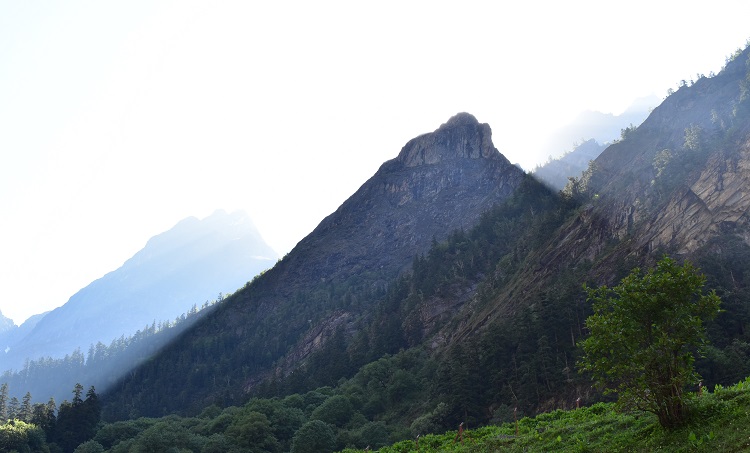
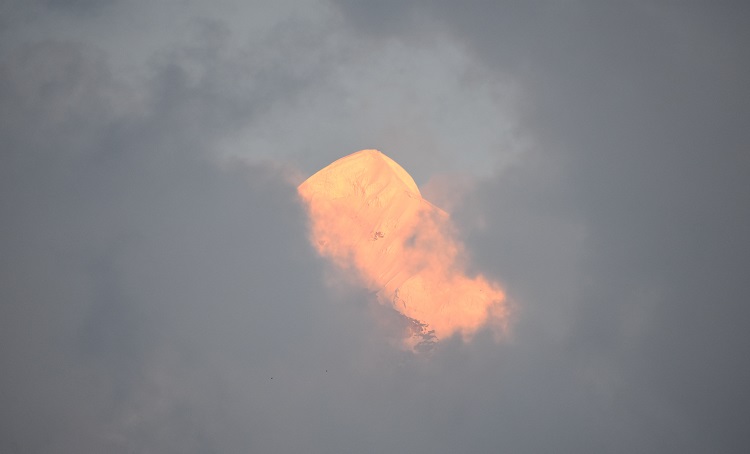
With ample parking available here, we quickly left our car and checked in for our short 4 minute heliride. With very limited baggage we took off for a scenic flight but before we could take in the views of the thick forest, the imposing Hathi parvat and fast flowing stream of white frothing water below, we were already landing at Govind Dham. Excitement levels were at a high as we had just saved a day’s trek, but did not account for the sudden increase in height. At Govind Dham (3095 mts) we should have stayed overnight to acclimatize but started to walk towards Gangaria soon after arrival and onwards to the Hemkund lake and the gurdwara (4633 mts). This was a really big mistake on our part, and I hope that whoever is planning a similar visit does not repeat this mistake. Halfway up the steep hike our lungs were bursting and the snowladen paths made it much more difficult walking. This was admittedly the toughest part of the hike where on several occasions I felt like giving up and just sitting. I even asked the Almighty for forgiveness for having come up so close to the gurdwara yet could not go further. Strange are the ways of God that some unknown energy shot through the body and with a great effort I made it to the frozen lake and the Gurdwara. The soft strains of the kirtans going on spurred me but in spite of my best intentions, I could not bring myself to take a dip in the lake of icy waters. With nearly 7 feet of snow on ground, pathways had to be cut for the approach to the building which remains closed for at least six months of the year. The mountains which nestled the lake were absolutely breath-taking and we could see at least 4 of the 7 nishan sahibs. The entire experience was very spiritually soothing. After the Ardas and the customary Chai langar we started back for Govind Dham. The short lived energy burst lasted for no more than a half hour into the descent and by the time we entered the Kumaon Mandal Vikas Nigam camp I was exhausted, cold and hungry. After an early dinner I just got into bed and slept soundly.
A breakfast of chai and aloo paranthas was just what was required before we flew back to Govind Ghat where after the customary visit to the Gurudwara, we left for Badrinath. The lush green forests on the mountain sides now started becoming sparse and by the time you arrive at Badrinath Township you do not see very many trees. We drove straight to our accommodation and after resting and a late lunch, went straight to the shrine to pay our respect. With some special arrangement we got special darshans and a small puja ceremony at the sanctum sanctorum. Thereafter we headed to Mana village which is the last village where movement of tourists and traffic is possible. We came across an incredible carpet of mauve flowers on the mountain side and were told that this was the famous herb – Oregano. We arranged to buy some excellent pure oregano and after getting a special permission went about 2 kms further to a very seldom referred Prayag – Keshav Prayag where the Alaknanda meets the mythical Saraswati. The massive mountains Nar Parvat, Narayan Parvat and of course the conical Neelkanth peak take centre stage.
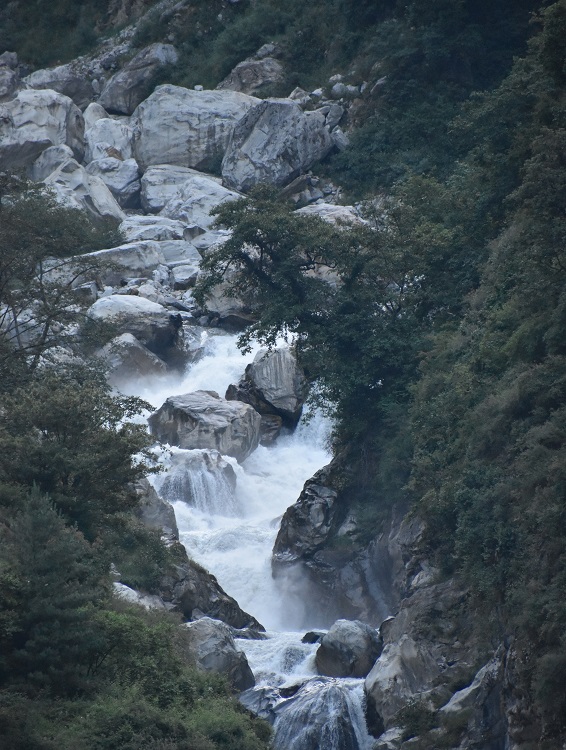
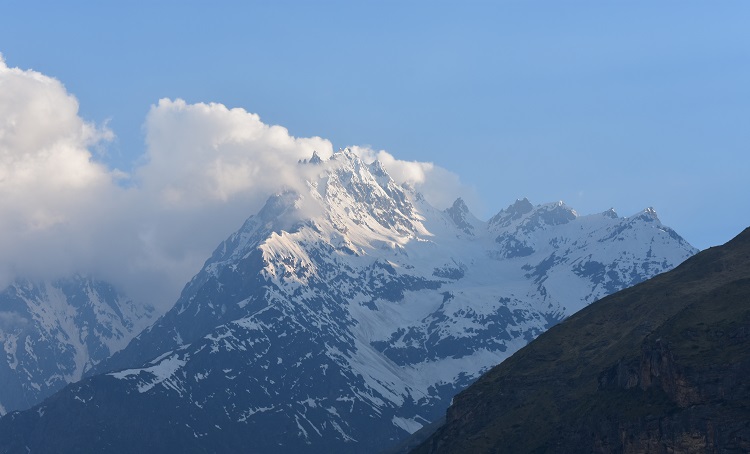
Legend has it that after the battle of Mahabharat, the Pandavs were so morose and saddened by the large scale loss of lives and destruction that they decided to repent and leave the worldly life. In order to atone for their sins they came to the Himalayas in search of Satopanth – the place where the holy trinity sit to meditate. To reach the lake and the Swargrohini, Bhim had to make a makeshift bridge over the river at the prayag which is known as “Bhim pul”. It is here that the Saraswati river just goes underground and does not emerge again. An interesting story goes that Lord Brahma asked Ved Vyas to narrate the Mahabharata for posterity and asked Lord Ganesh to write it which he narrated the entire epic. The place chosen was a cave on the banks of the fast flowing Saraswati river. Lord Ganesh laid down a condition that once the sage Ved Vyas starts to narrate, it should be without any breaks. Ved Vyas too decided to lay down a condition for Lord Ganesh – which was that each and every word / shlok he recited would have to be first understood and the only written. Ved Vyas started narrating very difficult sholks (he is said to have narrated 60000 such shlokas) which Lord Ganesh was understanding with some difficulty. Due to the noise of the fast flowing river and the difficult non-stop recitation, Lord Ganesh found it difficult to hear it and time and again ask the river to quieten down. As the river did not accede to his request, he decided to curse the river that it would just vanish right there. That is why the river just disappears without a trace!
Early next morning while driving past the Badrinath temple, we saw a sight which will remain etched in my mind forever – in a small opening in the clouds covering the Neelkant peak, the very peak just emerged and looked so ethereal and beautiful that the entire trip became worth it.
The return was through Srinagar and Pauri. The early morning breakfast stop at Pauri for chai and bun-omelette seemed like a gourmet meal. Landsdown was unusually quiet for this time of the year and by the time we arrived back in the plains it was very hot and one wanted to just head back into the cool mountains again.



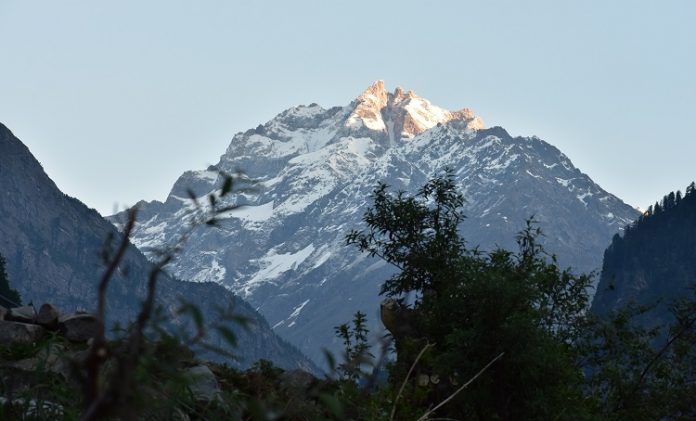
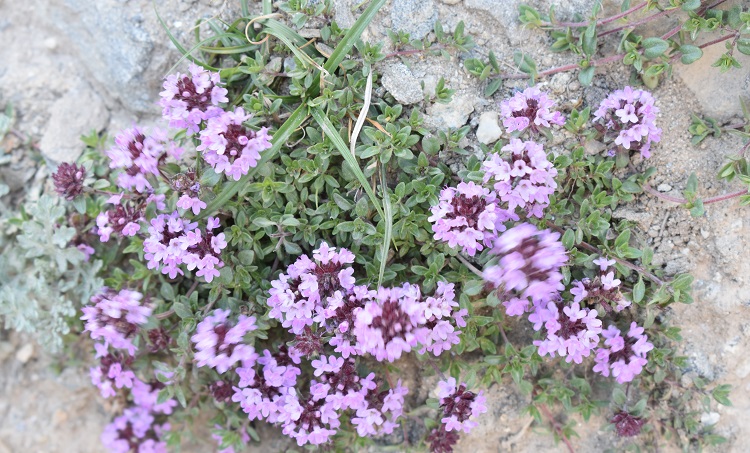
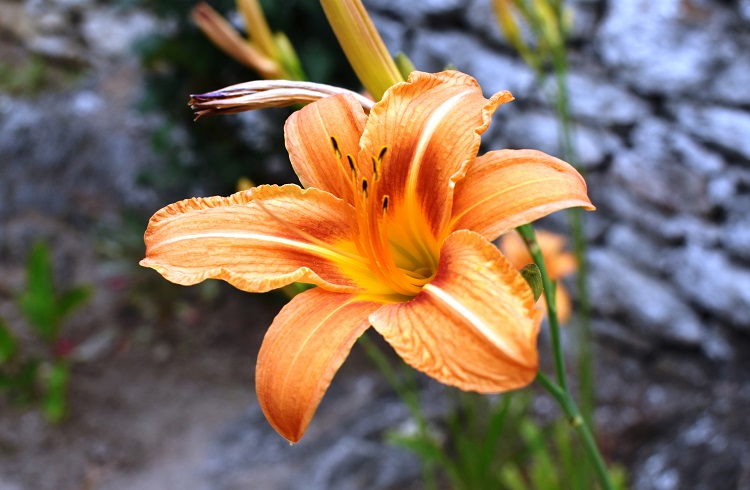
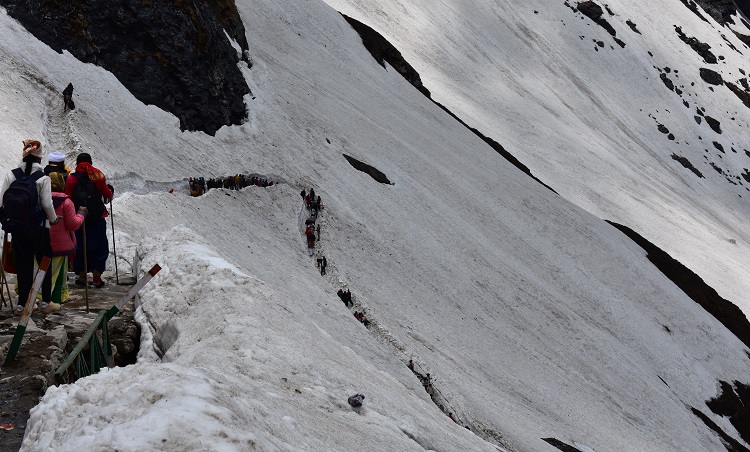
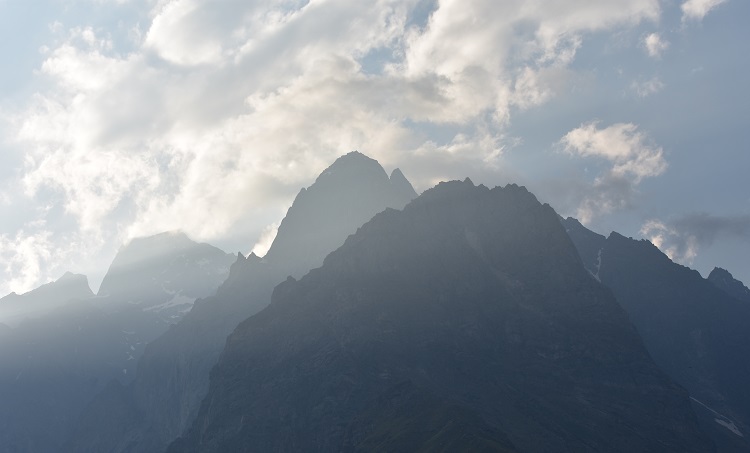
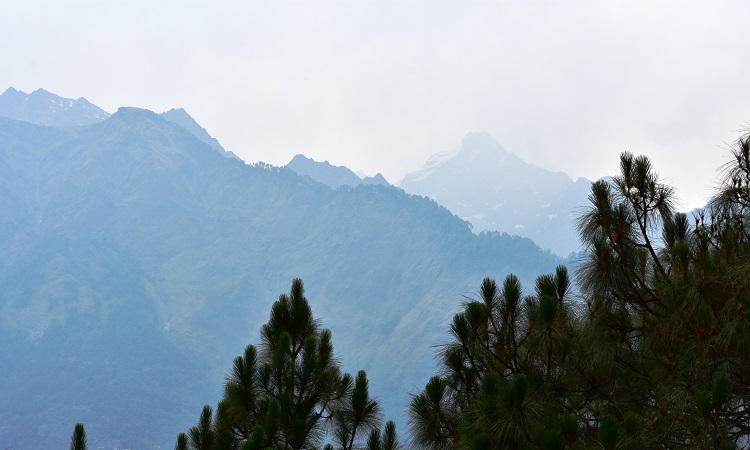






Lively and lovely narrative that made the reader literally feel as if being present amidst this enchanting scenario in person.
Thank you…
Comments are closed.